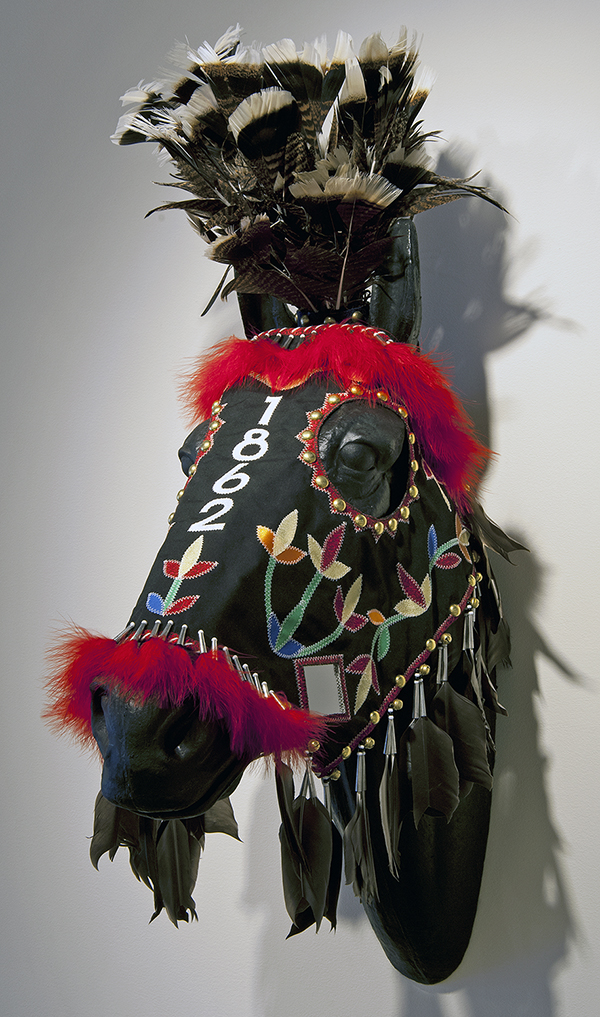
By Deborah Locke
First, a question. Would you agree that in the years since European settlers occupied Minnesota land and shoved Natives to reservations or killed them outright, the primary narrative of what happened is the white perspective?
If you accept that premise, you also realize that this partial narrative of history has shown itself through textbooks, popular culture including movies, books, and textbooks; through federal and state Indian policy and through a peculiar belief that the way the world works just sort of happened.
In an effective way, the Minnesota History Center’s new permanent exhibit, “Our Home: Native Minnesota” disavows the viewer of beliefs suggesting that American Indians are pitied relics of the past or irrelevant today. The 2,700 square foot exhibit opens Dec. 7.
A second question: why this and why now? “We are excited about this exhibit because no history of Minnesota can be complete without understanding Native American history in the region,” said Dr. Mattie Harper (Bois Forte Band of Chippewa). “Rather than seeing Native history as segregated from, or as merely a precedent to, Minnesota history, we want to show it as central to regional historical narratives”

She added that Minnesota History Center staff have heard from visitors and teachers alike that they want more Native American content. That makes Native American historical content in demand. In the creation of the “Our Home” exhibit, MHS staff consulted with Native educators from St. Paul Indian Education, Minneapolis Indian Education, the Bdote Learning Center, and the University of Minnesota.
I previewed the “Our Home: Native Minnesota” exhibit a few weeks before it was completed which means this review is, well, incomplete. What were several blank walls, empty display cases and construction areas are now fully organized into sections highlighting Dakota homeland, Ojibwe homeland, relationships and identities, enduring connections, resiliency and agency, and service to community.
However, this is what I did see. A 2014 star quilt by Gwen Westerman (Sisseton Wahpeton Oyate) greets visitors as they enter, along with text on the cultural and historical significance of the quilts. Migration maps show Dakota and Ojibwe movement. Other displays showed tree bark writing, as well as an Ojibwe/English dictionary, baskets, beadwork and quillwork, and clothing.
A photograph shows 1830s Ojibwe women making lace who were taught the skill by female Christian missionaries whose goal was to “civilize” the women. The clueless missionaries sought to “civilize” Ojibwe women who for centuries were already highly skilled seamstresses, beadworkers and quillworkers. The text points out rightfully that if anyone had lessons to learn, it was the missionaries.
I was fascinated with a very large, detailed photo from a 1912 White Earth powwow that was attended by Ojibwe and Sisseton Wahpeton Oyate Dakota. The picture shows men and women in full regalia, horses, a prominent U.S. flag blowing in the wind, and tents in the background. Throw in an Indian taco stand and the view could pass for much of what you’d see at a powwow today. Visitors are asked to help identify the Ojibwe and Dakota in the photo.
Another great photo shows contemporary protestors at the Standing Rock Reservation. This exhibit’s balance between the old and new shows that American Indian culture, ceremonies and way of life continue to the present day. Signage at the exhibit entrance sums it up pretty well: “…connections to our land, communities and traditions run deep and remain strong. We are still here.”
Attend a free family day at the Minnesota History Center from 10 a.m. to 5 p.m. on Dec. 7, located at 345 Kellogg Blvd., St. Paul. Musician Mitch Walking Elk will perform. Hoop dance demonstrations, traditional games, birch bark biting and more are scheduled. For more information, see: www.mnhs.org/ourhome.






